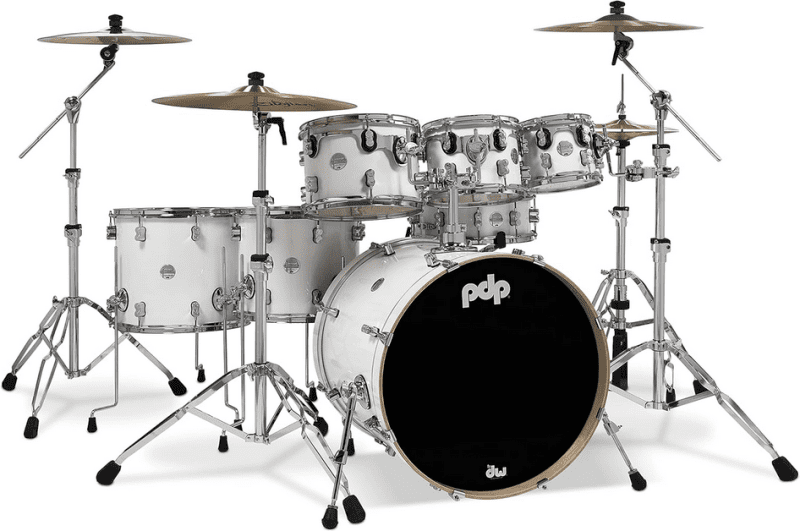Your Guide to Blues Drumming
The roots of blues music can be traced back to the African diaspora and the music brought to America by enslaved Africans. With its strong emphasis on rhythm, blues has always had an inherent connection to percussion instruments. The early blues drumming emerged in the late 1800s, heavily influenced by African and African-American traditions.

In the early days, blues musicians relied on a range of makeshift percussion instruments, including wooden barrels, washboards, and spoons. However, as the blues became more popular and electric amplification was introduced, the drum kit started to play a central role in blues bands. Drummers began experimenting with different rhythms, incorporating elements of jazz, swing, and syncopation to create the distinctive blues sound.
Notable blues drummers, such as Fred Below, helped shape the genre. Below is often regarded as a pioneer of blues drumming and known for his steady, swinging beats. His inventive use of the bass drum and snare drum helped define the rhythmic drive behind many blues songs. The rhythm section, comprised of the drums, bass, and sometimes piano or guitar, lays the foundation for the expressive melodies and soulful vocals that characterize the blues.
As the blues evolved over the years, so did the drumming style. Different regions and subgenres developed their own distinct drum patterns and techniques. For example, Chicago blues drumming is characterized by its energetic, driving rhythms, while Texas blues drumming often emphasizes a more relaxed and laid-back groove. Today, blues drumming continues to evolve, incorporating elements from various music genres, while staying true to its roots.

Essential Techniques for Blues Drumming Mastery
Blues drumming is a fundamental aspect of the blues music genre, providing a rhythmic backbone that propels the music forward. Mastering blues drumming patterns requires a combination of solid technique and a deep understanding of the genre. In this section, we will explore some essential techniques that will help you on your journey to becoming a blues drumming master.
1. Swing Feel: One of the defining characteristics of blues music is its swing feel. Unlike straight-ahead rock or pop drumming, blues drummers need to develop a relaxed and slightly delayed playing style. This swing feel creates a compelling groove that taps into the soulful essence of the blues. Work on developing your ability to loosen up your playing and experiment with different swing feels to find the perfect groove.
2. Shuffles: Shuffles are a cornerstone of blues drumming, and learning how to play them with precision is essential. The basic shuffle pattern consists of alternating between the bass drum and the snare drum, while the hi-hat provides the constant swing rhythm. Experiment with different variations and tempos, and don't be afraid to incorporate fills to add flavor to your playing.
3. Dynamics: Dynamics play a crucial role in creating an engaging and expressive blues drumming performance. Blues music often calls for a wide range of dynamics, from soft and subtle to loud and powerful. Practice controlling the volume of your playing and experiment with using accents, ghost notes, and rimshots to add texture and depth to your grooves.
4. Call and Response: The call and response structure is deeply rooted in the blues tradition, and as a blues drummer, it's important to understand how to apply this concept to your playing. Explore the interplay between your drum patterns and other instruments, such as the guitar or vocals. Use your drumming to respond to melodic phrases with rhythmic accents and fills, creating a musical conversation that enhances the overall blues experience.
Remember, mastering blues drumming patterns takes time and dedication. Practice these techniques regularly, listen to great blues drummers, and immerse yourself in the rich history of blues music. With persistence, you'll soon find yourself becoming a blues drumming master, able to create authentic and captivating grooves that will have everyone in the room moving to the beat.
Breaking Down Classic Blues Drumming Patterns
When it comes to playing the blues on the drums, it's all about capturing the raw essence and feel of this legendary music genre. The rhythmic patterns used in classic blues drumming are what gives the music its distinctive sound and groove. In this article, we will break down some of the most essential patterns that every aspiring blues drummer should master.
1. The Shuffle: The shuffle is the heartbeat of blues music. It's a rhythm that is instantly recognizable and sets the foundation for the entire band. To play the shuffle, you'll need to emphasize the backbeat on the snare drum while keeping a steady eighth-note pulse on the hi-hat. Start by playing the snare drum on beats two and four, and then add a swing feel to the eighth notes on the hi-hat to give it that classic bluesy groove.
2. The Train Beat: This pattern was inspired by the sound of a moving train, which became a common theme in blues songs. To play the train beat, you'll use the kick drum to imitate the sound of a chugging locomotive, while the snare drum and hi-hat add accents and energy. Start by playing the kick drum on beats one and three, the snare drum on beats two and four, and the hi-hat on all eighth notes. Experiment with different variations and dynamics to create your signature train beat.
3. The Bo Diddley Beat: Named after the iconic blues guitarist Bo Diddley, this beat is characterized by its syncopated rhythm and relentless energy. Start by playing the kick drum on beat one, the snare drum on beat three, and use the hi-hat to emphasize the offbeat eighth notes. The result is a driving and hypnotic pattern that will get people moving on the dance floor.
By mastering these classic blues drumming patterns, you'll be able to lay down a solid groove and create an authentic blues feel in your playing. Remember, it's not just about playing the right notes, but also about capturing the spirit and emotion that makes blues music so special. So, grab your sticks, start practicing, and let the blues take you on a musical journey like no other!
Tips for Perfecting Your Blues Drumming Skills
Blues drumming is an essential component of creating that soulful, groovy sound that epitomizes this genre. Whether you're a beginner or an experienced drummer looking to improve your skills, keep these tips in mind:
- Develop a solid sense of rhythm: The foundation of any good drummer lies in their ability to keep time. Practice with a metronome or drum machine regularly to hone your timing skills. Focus on staying consistent and locking in with the groove.
- Master the traditional blues shuffle: The shuffle is a distinctive rhythm in the blues, characterized by its swing feel. Spend time studying and emulating the patterns played by great blues drummers. Pay attention to the ghost notes, accents, and syncopation used to create that authentic blues sound.
- Embrace simplicity: While improvisation has its place in blues drumming, simplicity is key. Avoid excessive fills or complicated patterns that distract from the groove. Instead, prioritize a steady, solid groove that supports the other musicians and allows the blues to shine.
- Develop your dynamics: Dynamics play a crucial role in blues drumming. Experiment with varying your volume levels to create tension, build-ups, and expressive drum solos. Practice controlling the intensity of your hits, from soft to hard, to add depth and emotion to your playing.
- Listen and learn from the masters: Blues drumming has a rich history, and there are countless legendary drummers to draw inspiration from. Spend time listening to recordings of blues greats such as Buddy Guy, Howlin' Wolf, or Muddy Waters. Pay attention to their style, technique, and overall approach to playing the blues.
Remember, mastering blues drumming takes time and practice. Stay committed, experiment, and don't be afraid to make mistakes. With perseverance, you'll develop your own unique style and become a master of the blues drumming patterns.
Recent Featured Articles:
Understanding Styles: Exploring Drum Patterns in Different Music Genres
Unleash Your Rhythm with Jazz Drumming Lessons
5 Essential Drum Rudiments for Beginners




